Related Research Articles
The Kaurna people are a group of Aboriginal people whose traditional lands include the Adelaide Plains of South Australia. They were known as the Adelaide tribe by the early settlers. Kaurna culture and language were almost completely destroyed within a few decades of the British colonisation of South Australia in 1836. However, extensive documentation by early missionaries and other researchers has enabled a modern revival of both language and culture. The phrase Kaurna meyunna means "Kaurna people".

The Adelaide Park Lands comprise the figure-eight configuration of land, spanning both banks of the River Torrens between Hackney and Thebarton, which encloses and separates the City of Adelaide area from the surrounding suburbia of greater metropolitan Adelaide, the capital city of South Australia. They were laid out by Colonel William Light in his design for the city, and originally consisted of 2,300 acres (930 ha) "exclusive of 32 acres (13 ha) for a public cemetery". One copy of Light's plan shows areas for a cemetery and a Post and Telegraph Store on West Terrace, a small Government Domain and Barracks on the central part of North Terrace, a hospital on East Terrace, a Botanical Garden on the River Torrens west of North Adelaide, and a school and a storehouse south-west of North Adelaide.
Kaurna is a Pama-Nyungan language historically spoken by the Kaurna peoples of the Adelaide Plains of South Australia. The Kaurna peoples are made up of various tribal clan groups, each with their own parnkarra district of land and local dialect. These dialects were historically spoken in the area bounded by Crystal Brook and Clare in the north, Cape Jervis in the south, and just over the Mount Lofty Ranges. Kaurna ceased to be spoken on an everyday basis in the 19th century and the last known native speaker, Ivaritji, died in 1929. Language revival efforts began in the 1980s, with the language now frequently used for ceremonial purposes, such as dual naming and welcome to country ceremonies.
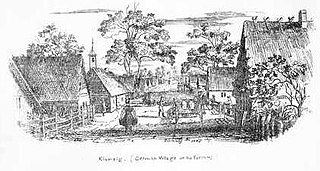
German settlement in Australia began in large numbers in 1838, with the arrival of immigrants from Prussia to Adelaide, in the then colony of South Australia. German immigrants became prominent in settling South Australia and Queensland. From 1850 until World War I, German settlers and their descendants comprised the largest non-British or Irish group of Europeans in Australia.
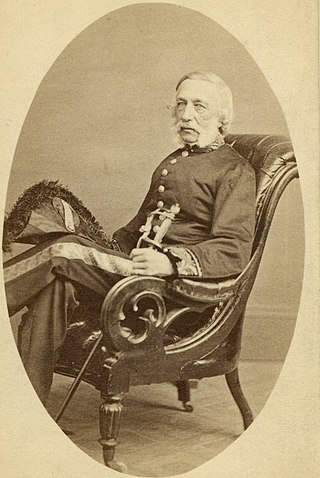
William Wyatt was an early settler and philanthropist in South Australia. He was the third interim Protector of Aborigines in the colony between 1837 and 1839, worked on documenting the Kaurna language of the local Australian Aboriginal inhabitants of Adelaide and was a member of many boards, involved with fields as diverse as education, medicine and horticulture.

Wasleys is a small town north-west of Gawler, South Australia. Roseworthy College is located around 6 km (3.7 mi) south of the town. At the 2016 census, Wasleys had a population of 348.

The Register, originally the South Australian Gazette and Colonial Register, and later South Australian Register, was South Australia's first newspaper. It was first published in London in June 1836, moved to Adelaide in 1837, and folded into The Advertiser almost a century later in February 1931.

Matthew Moorhouse was an English pioneer in Australia, pastoralist, politician, and Protector of Aborigines in South Australia. He was in charge of the armed party that murdered 30-40 Maraura people, which may have included women and children, now known as the Rufus River massacre.
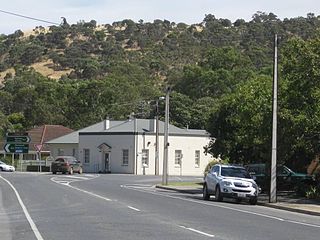
Yankalilla is an agriculturally based town situated on the Fleurieu Peninsula in South Australia, located 72 km south of the state's capital of Adelaide. The town is nestled in the Bungala River valley, overlooked by the southern Mount Lofty Ranges and acts as a service centre for the surrounding agricultural district.

The Patawalonga River is a river located in the western suburbs of the Adelaide metropolitan area, in the Australian state of South Australia. It drains an area of flat, swampy lands formerly known as the Cowandilla Plains or The Reedbeds, which in the mid-20th century were drained by engineering works, enabling the establishment of Adelaide Airport and the development of residential housing.

Thomas Gilbert (1786–1873), a pioneer in South Australia, was its first Colonial Storekeeper and its first Postmaster. He was also a fourth-generation mathematical instrument maker and optician in England, his family being highly regarded in this field at the time.
The South Australian was a newspaper published in Adelaide, the capital of colonial South Australia from 2 June 1838 to 19 August 1851. Between 1838 and 1844, it was published as The Southern Australian.
Cawthorne and Co, also known as Cawthorne's Limited, was a company founded in 1870 in Adelaide, South Australia, by Charles Cawthorne and his father William Anderson Cawthorne, which dealt in musical instruments, sheet music and recordings, and acted as concert promoters.
In 1836, at least nine ships in 1836 carried the first European settlers from England to the south coast of Australia for the establishment of the City of Adelaide and the province of South Australia. Although not all of the ships sailed together, they have been referred to as the "First Fleet of South Australia", as all were carrying the founding planners and administrators of the new colony as well as the first emigrants, and all were represented at the proclamation of the new province.
Walker Brothers was a pioneer soap manufacturer in the British colony of South Australia.
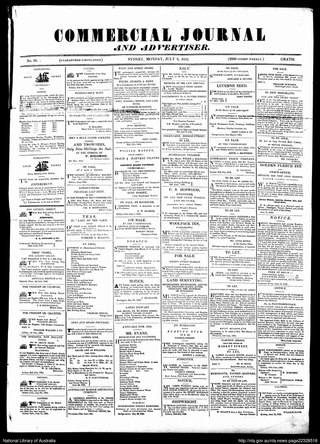
The Commercial Journal and Advertiser is a defunct Australian newspaper that was published in Sydney New South Wales, from the 1830s and continued publication through to the mid 1840s, under various names in Sydney, New South Wales, Australia.

The Hundred of Mudla Wirra is a cadastral unit of hundred located on the northern Adelaide Plains of South Australia, first proclaimed in 1847. The hundred is bounded on the north by the Light River and on the south by the Gawler River.
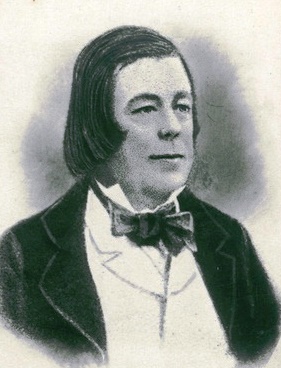
William Williams was an early settler in the Province of South Australia, known for establishing the Walkerville Brewery and for his work on the Kaurna language. He was Deputy Colonial Storekeeper for some time.
Clamor Wilhelm Schürmann was a Lutheran missionary who emigrated to Australia and did fundamental pioneering work, together with his colleague Christian Gottlieb Teichelmann, on recording some Australian languages in South Australia.

Ivaritji also known as Amelia Taylor and Amelia Savage, was an elder of the Kaurna tribe of Aboriginal Australians from the Adelaide Plains in South Australia. She was "almost certainly the last person of full Kaurna ancestry", and the last known speaker of the Kaurna language before its revival in the 1990s.
References
- 1 2 "The South Australian colonist, and settlers' weekly record of British, Foreign, and colonial intelli... [Catalogue entry]". National Library of Australia . 3 September 2020. ISSN 1461-426X . Retrieved 12 January 2021.
- 1 2 3 4 "South Australian colonist". SA Memory. State Library of South Australia . Retrieved 12 January 2021.
- ↑ Tait, W.; Johnstone, C.I. (January 1845). Tait's Edinburgh Magazine. W. Tait. p. 4-IA1. Retrieved 12 January 2021.
- ↑ Amery, Rob. "Piltawodli Native Location (1838-1845)". German missionaries in Australia. Griffith University . Retrieved 8 December 2019.
- ↑ Williams, William (14 July 1840). "The language of the natives of South Australia" (PDF). South Australian Colonist . 1 (19): 295–296. Retrieved 11 January 2021– via Australian Cooperative Digitisation Project. Australian Periodical Publications 1840–1845. (Access page here.
- ↑ Schultz, Chester (13 August 2020). "Karrawadlungga". Adelaide Research & Scholarship. University of Adelaide. hdl:2440/113971 . Retrieved 12 January 2021.
- ↑ Schultz, Chester (13 August 2020). "Karrawadlungga" (PDF). Place Name Summary (PNS) 9/04.
...with some more thoughts on the 'Wirra tribe'. and PART 3 of the 1839 Police expedition